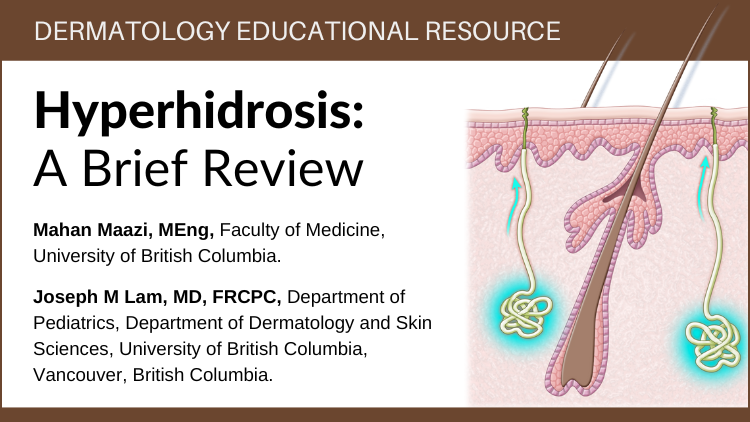Christian A. Murray MD, FRCPC, Assistant Professor, Division of Dermatology, University of Toronto, Women's College Hospital, Toronto, ON,
Nowell Solish MD, FRCPC, Assistant Professor, Division of Dermatology, University of Toronto, Women's College Hospital, Toronto, ON
Abstract
Focal hyperhidrosis is a disorder of idiopathic excessive sweating that typically affects the axillae, soles, palms, and face. This common problem may be associated with considerable physical, psychosocial, and occupational impairments. Current therapeutic strategies include topical aluminum salts, tap-water iontophoresis, oral anticholinergic agents, local surgical approaches, and sympathectomies. Although non-surgical treatment complications are typically transient, surgical adverse events may be permanent and significant. Considerable evidence suggests that botulinum toxin type A (BTX-A) injections into hyperhidrotic areas can considerably reduce focal sweating in multiple areas without major side effects. BTX-A has therefore shown promise as a potential replacement for more invasive treatments if topical options have failed.
Keywords: hyperhidrosis, botulinum toxin, axilla.

